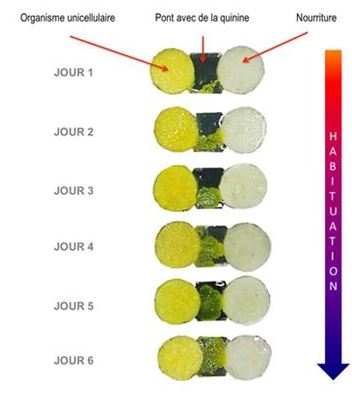It seems that it doesn't take a nervous system to be able to learn. The single-celled protist Physarum polycephalum — a slime mold and distant cousin of plants, fungi and animals that appeared on Earth some 500 million years before humans — is capable of habituation.
Habituation — learning not to fear a harmless substance after being confronted with it on several occasions — exists in all animals, but was never observed in a non-neural organism. This discovery could improve existing understanding of the origins of learning, which markedly preceded those of nervous systems and will benefit studies of learning types in other very simple organisms, such as viruses or bacteria, that were doing so before the evolution of the nervous system and brain.
An ability to learn, and memory, are key elements in the animal world because learning from experiences and adapting behavior accordingly are vital for an animal living in a fluctuating, and potentially dangerous, environment. Since single-celled organisms also need to adapt to change, researchers want to know if they display an ability to learn. Bacteria certainly show adaptability, but it takes several generations to develop and is more a result of evolution.

How the single-cell organism Physarum polycephalum learns by habituation to ignore the presence of quinine (a bitter substance) during its journey towards food. The scientists measured the breadth of the pseudopod (a projection from the cell) used to reach the food. A narrow pseudopod was synonymous with repellent behavior, while a large pseudopod represented normal behavior. Credit: Audrey Dussutour (CNRS)
The slime mold Physarum polycephalum, a giant cell — it contains thousands of nuclei, can cover an area of around a square meter and moves within its environment at speeds that can reach five cm per hour — that inhabits shady, cool areas and has proved to be endowed with some astonishing abilities, such as solving a maze, avoiding traps or optimizing its nutrition. But until now very little was known about its ability to learn.
During a nine-day experiment, the scientists provided different groups of this mold with bitter but harmless substances that they needed to pass through in order to reach a food source. Two groups were confronted either by a "bridge" impregnated with quinine, or with caffeine, while the control group only needed to cross a non-impregnated bridge.
Initially reluctant to travel through the bitter substances, the molds gradually realized that they were harmless, and crossed them increasingly rapidly — behaving after six days in the same way as the control group. The cell thus learned habituation. After two days without contact with the bitter substance, the mold returned to its initial behavior of distrust. Furthermore, a protist habituated to caffeine displayed distrustful behavior towards quinine, and vice versa. Habituation was therefore clearly specific to a given substance.
Citation: Romain P. Boisseau, David Vogel, Audrey Dussutour, 'Habituation in non-neural organisms: Evidence from slime moulds', Proceedings of the Royal Society B, 27 April 2016; DOI : 10.1098/rspb.2016.0446


